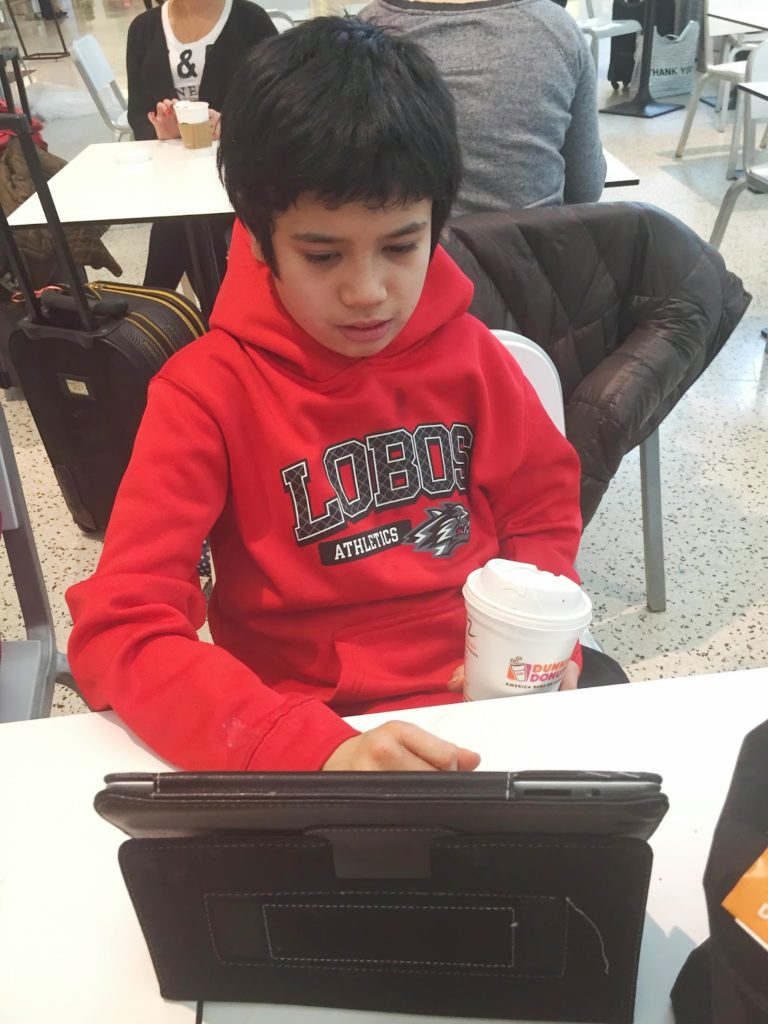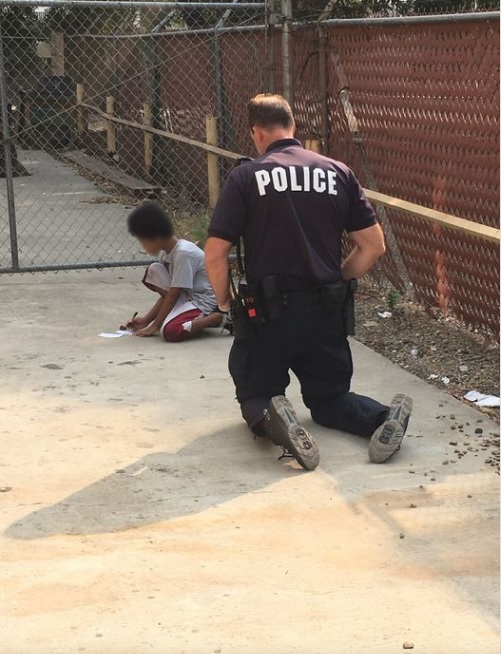There are people who are unable to articulate their thoughts using the spoken word. Not deaf or ‘mute’ or at all intellectually challenged, some are trapped by a neurological disorder that seeks to isolate them in a world of confusion. A basic ability most of us who function on a somewhat “normal” level take for granted was not part of the standard factory-installed kit in these frustrated beings, verbal language skills.
When Lisa Reyes welcomed her bouncing baby boy into the world, she did not know the bouncing would morph into stimming as young Philip grew up into an intelligent teenager, a self-advocate with his own blog – Faith, Hope, and Love…With Autism. Philip Reyes, a non-verbal autistic, found his “path from silence to communication” using letterboards and computers. Thanks to modern technology, he is able to express himself and share his perspective on the autistic life through his blog posts and other internet publishers.
According to the DSM-5 (Diagnostic and Statistical Manual of Mental Disorders, 5th edition), ‘Autism Spectrum Disorder (ASD) is characterized by persistent deficits in social communication and social interaction across multiple contexts, including deficits in social reciprocity, nonverbal communicative behaviors used for social interaction, and skills in developing, maintaining, and understanding relationships.’ (APA, 2013)
Autism is called a spectrum disorder due to the variety of symptoms and levels of impairment that will manifest in people diagnosed with the disorder. A ASD diagnosis is not an auto-indicator of substandard individual intellect. It is folly to believe a person struggling to convey their thoughts and/or control physical behaviours is unable to process information, or, is somehow less intelligent than those who verbally speak while sitting still. Albert Einstein has been diagnosed from afar with a form of autism called Aspberger Syndrome, or Aspberger’s – it is considered a higher functioning manifestation of ASD as the disorder is accompanied by relatively low levels of physical and intellectual impairment.
Approximately 40% of people with an Autism Spectrum Disorder are affected by a form known as Non-Verbal Autism. The ability to carry on a conversation with another person, or even to speak at all, is greatly impaired in this form. Some people with non-verbal autism do not speak because they’ve been deprived of proper instruction in verbal language skills; caretakers decide there’s no point teaching what cannot, supposedly, be learned. In other situations, apraxia of speech – the inability to make the mouth form words – is the cause of the speech disorder. Non-verbal autistics often know exactly what they wish to say, they are simply unable to form the utterance.
On April 2, 2015, World Autism Awareness Day, then 12-year old Philip Reyes published a short essay in his blog, describing what it was like to be autistic. The blog is full of insight on what he perceives to be inadequate or inappropriate educational practice norms used when teaching autistic children, as well as honestly expressed feelings, hopes, dreams and worries. Here are some excerpts from Philip’s 2015 post:
“Let’s pretend you are like me. You can’t talk; but having a thinking mind, you can understand. Imagine you are each day answering back what you mean to say. But only you can hear it. People hear your voice saying things you don’t necessarily mean. They think that’s all you are capable of thinking. People see you stimming by your repetitive flapping or tapping. They think there is no purpose. They don’t understand the minute you stop, the moment is flooded with lights that hum, loud sounds that echo, kids moving too fast for me to keep up with, and people trying to engage me.
… People see your hyper movement. They prefer you to sit quietly. It’s hard to feel my body in space. I prefer to move because I can feel my body better
… No person should be without a voice.
… Meaningful communication means being able to say what I really want to say.
… Love is felt when you are accepted. Love is felt peacefully when you are no longer seen by your momentary deficits but by your attributes that make you a complete person.
… Each life is special in its own way.”

Philip is blessed with access to devices that make it possible for him to interact with others on a real time basis. Not all who carry the Non-Verbal Autistic diagnosis are so fortunate. There are so many without the power to control their own vocal chords and mouths – unable to verbally express a need, a worry, a query or a warning – the words stay trapped in their head. A few weeks ago, one such silent stoic was discovered by a passerby in California.
September 14, 2020, Stockton Police were notified by a citizen that a “scared and confused” child had been seen wandering near the downtown area. Officers on patrol were notified to keep an eye out for a lost boy and get him to safety. In short time, one of Stockton’s finest bike cops radioed that he had located the lad – everybody exhaled with relief.
The child, thankfully, was found unharmed but there was a problem. Scared and disoriented, he was not speaking. The police officer tried in vain to glean the boys name, his mother’s name, a phone number or an address. Something was quite clearly amiss. Was the boy shutting down due to trauma? Was there a language barrier? Did he not trust the white police officer who was trying to help him find his way home? Officer Bike Cop had the option to call Social Services and have one of their employees come collect the child, let them figure out what the problem may be, where the boy belonged. Instead, he patiently embarked on a journey of discovery.

Senior citizens and people with disabilities in the Los Angeles area who qualify for reduced public transit fares carry a TAP (Transit Access Pass) bus pass/card. Though he was not carrying any type of formal identification, the lost boy did have a TAP bus pass tucked into one of his pockets. (It is unclear whether the boy offered the pass or if Officer Bike Cop happened across same while gently searching for a clue.) The symbol on the pass which denotes reason for/type of disability was the letter ‘N’ for Autism. The frightened youngster was a non-verbal autistic, unable to ask for help when he found himself lost, or to answer the questions now being presented.
The police officer realised what was going on and provided the disoriented boy with pen and paper, opening a channel of communication between cop and child. The information began to flow. A relative of the boy was soon located and he was delivered into their care, safe and sound.
While police officers receive regular training on how to deal with all kinds of different people in all manner of situations, Officer Bike Cop utilised tools the Stockton Police Department had neither instilled nor issued to resolve the lost autistic child problem. Paraphrasing Philip Reyes’ beautiful expressions, the officer lost sight of a momentary deficit and found the special, complete person seeking acceptance and an avenue of meaningful communication. Qualities like human kindness cannot be taught, only emulated.
No person should be without a voice. Patience, human kindness and determination seem the ideal tools to wield in a battle to find meaningful communication. Kindly ask a non-verbal autistic if he or she might agree. If you do ask, be patient. It might take a minute to find a meaningful communication channel that works for the both of you.


